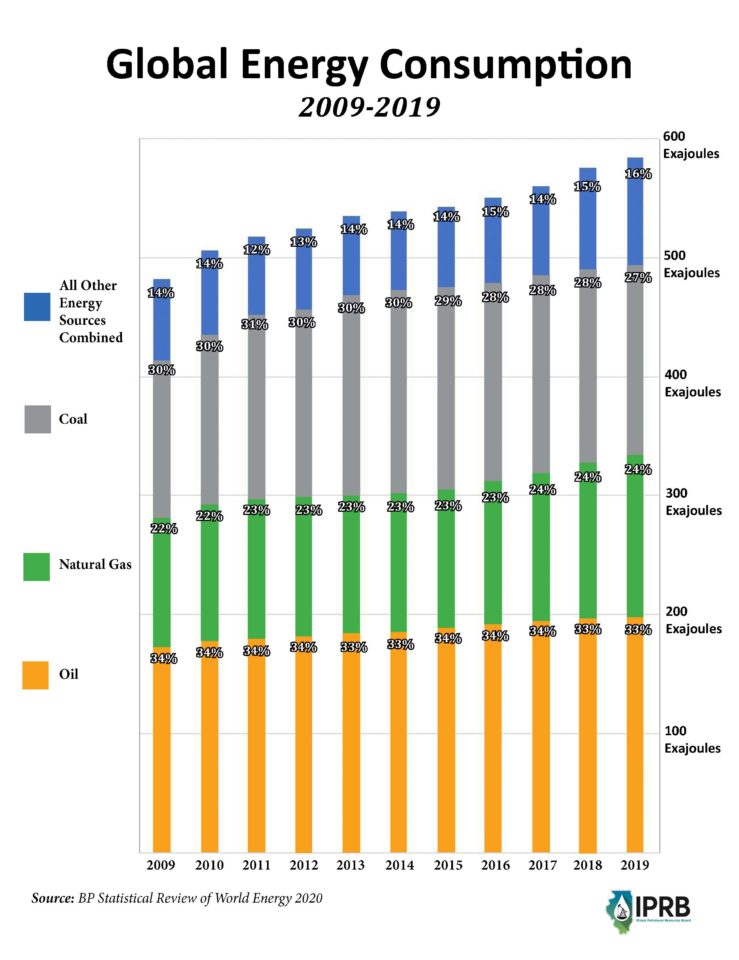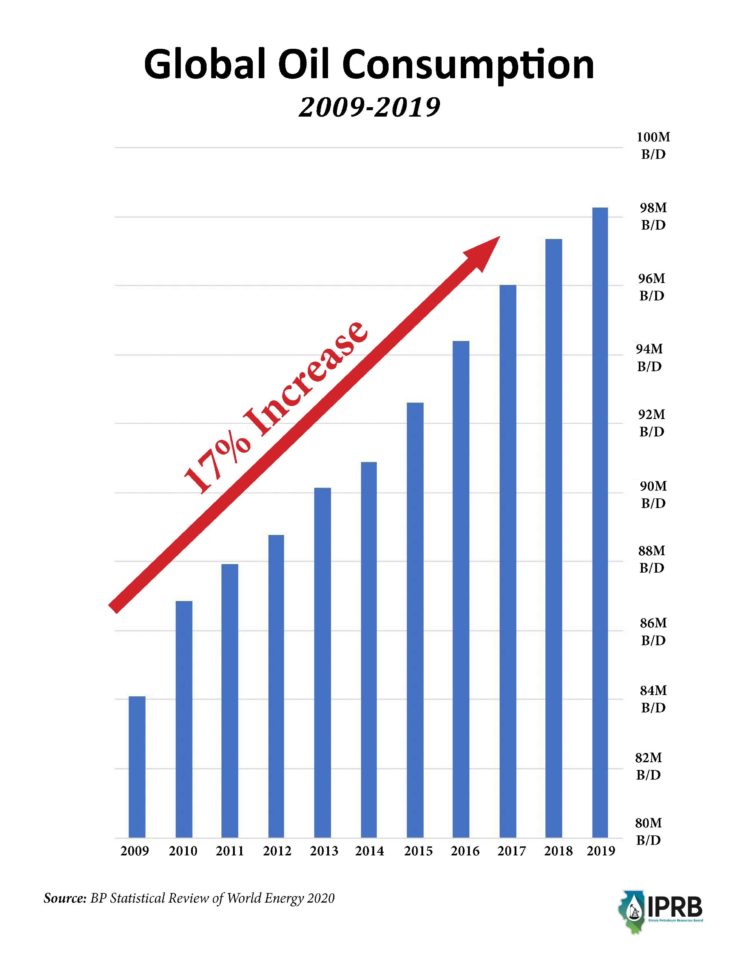Report Shows Oil Consumption Reached All-Time High in 2019
It has become quite fashionable to claim that the age of oil is all but over and that fossil fuel industries are in a rapid state of decline. But the facts simply do not support that rhetoric, with data from the recently released BP Statistical Review of World Energy 2020 being just the latest example.
The highly regarded report finds that global oil consumption reached an all-time high in 2019 and was the top source of energy in the world – a title it has held since the early 1960s. Oil’s resilience along with the continued ascension of natural gas use can explain why fossil fuels collectively supplied a whopping 84 percent of the world’s energy last year despite the continued decline of coal use.
In fact, as the following IPRB chart shows, oil and natural gas’ share of the overall global energy mix has remained remarkably consistent over the past decade-plus, ranging between 56 and 57 percent each year, while the overall fossil fuel share of the global energy mix has remained between 84 and 87 percent.
For perspective on how little the energy mix has actually changed despite all the hoopla about renewable energy growth, fossil fuels had the exact same 84 percent share of the overall global energy mix way back in 1973.
How can this be considering renewable energy accounted 41 percent of the total share of increased energy use in 2019? Simply put, overall global energy consumption growth has outpaced renewable energy growth. And despite the aforementioned narrative that oil demand is in decline, oil consumption has increased each of the past 11 years as well, as the following IPRB chart shows.
To put it bluntly, the oil and natural gas industry is not dying – far from it. And world’s seemingly unquenchable thirst for energy is the primary reason why the outlook for the industry is strong.
Though oil and natural gas’ share of the overall energy mix may decrease in the coming years, raw consumption of both fuels will likely increase as more and more people gain access to the modern energy that we in the United States take for granted.
It has been conservatively estimated that 74 percent of the world’s population lives in underdeveloped nations with limited access to reliable energy, while more than a billion people live in energy poverty, meaning they have no access at all to modern energy, most notably electricity. However, the International Energy Agency (IEA) expects that to change in the decades ahead, which is why the IEA forecasts that global oil demand will continue to increase through at least 2040 as more and more poor countries develop modern economies. It also expects the United States to meet 70 to 80 percent of the roughly 10 million barrels a day of added oil demand through 2030.
And although consumption from all energy sources is set to see a big decline in 2020 due to the coronavirus pandemic and dramatic slowdown in economic activity, the IEA expects it to be more a blip than long-term trend. The IEA expects oil demand returning “where it was, and beyond” as the world gradually lifts COVID-19 restrictions that have slowed global economic growth.
And even assuming 100 percent Paris Climate Agreement compliance, 48 percent of global energy will come from oil and natural gas by 2040. That explains why a recent New York Times analysis concludes that even if aggressive greenhouse gas emission reduction policies are implemented throughout the world, “the petroleum industry will have to find about 4.5 million, instead of seven million barrels a day of new production every year.”
The U.S. Department of Energy (DOE) has also released a report that shows fossil fuels – primarily oil and natural gas – will likely meet 79 percent of our energy needs in 2050. That represents just a one percent decline from fossil fuels’ U.S. energy consumption share last year.
The data and expert analysis doesn’t lie: The world is going to need a lot of oil and natural gas for many years to come. And it makes sense to produce as much of it as possible in Illinois and throughout the rest of the United States than to rely on more environmentally lax and potentially hostile nations for the energy the world needs.


